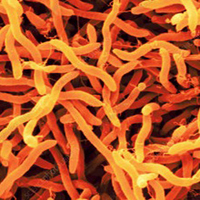The ability of Aliarcobacter butzleri strains isolated from foods of animal origin in Costa Rica to form biofilm

Accepted: 22 March 2021
HTML: 5
All claims expressed in this article are solely those of the authors and do not necessarily represent those of their affiliated organizations, or those of the publisher, the editors and the reviewers. Any product that may be evaluated in this article or claim that may be made by its manufacturer is not guaranteed or endorsed by the publisher.
Aliarcobacter butzleri is a zoonotic emerging food and waterborne pathogen widely distributed in nature. It is present in food processing environments and can easily be spread through the food industry because of its ability to form biofilm. The aim of this work was to determine the ability of strains isolated in Costa Rica from different food matrixes of animal origin to form biofilm. Thirty-eight A. butzleri strains previously isolated and identified from animal origin products were analyzed using the method described by Stepmovic et al. (2000), in three culture broths, brain heart infusion broth, Boer broth and Houf broth. Results showed that 67% of poultry origin strains, 62.5% of meat origin strains and just 8% of milk origin strains showed ability to form biofilm. The findings of this study confirm the adherence ability of A. butzleri to form biofilm, a characteristic that can promote dispersion and cross contamination along food industry processing lines.
PAGEPress has chosen to apply the Creative Commons Attribution NonCommercial 4.0 International License (CC BY-NC 4.0) to all manuscripts to be published.


 https://doi.org/10.4081/ijfs.2021.9020
https://doi.org/10.4081/ijfs.2021.9020



